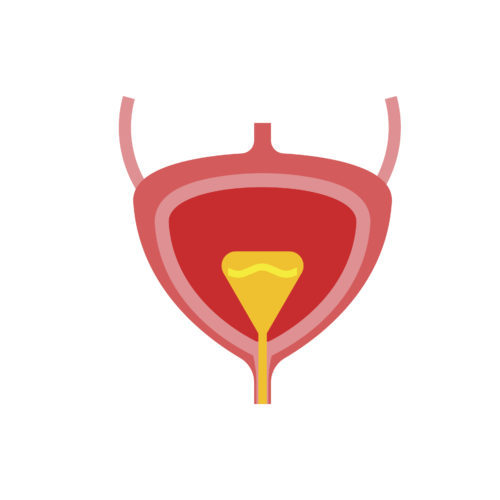Bladder Cancer: One of the Most Common Aliments Urologists Treat

10/20/2017
Bladder cancer is one of the most common ailments urologists treat. It begins when cells within the bladder begin to grow disproportionate to the rate of normal cells and a tumor, or multiple tumors, forms. The most common presenting symptoms is hematuria, or blood in the urine. Sometimes this is visible to the naked eye (“gross hematuria”) and sometimes just visible under the microscope on urinanalysis (“microscopic hematuria”). But sometimes patients will also present with other symptoms including a change in their voiding habits, new flank or back pain, or urinary retention. The number one risk factor for the development of bladder cancer is smoking, even if the patient quit smoking many years ago. Other risk factors include certain occupational exposures such as chemicals or even recurrent urinary tract infections. When a patient presents to UCA with hematuria, the workup typically includes several tests including CT scan of the abdomen and cystoscopy to look inside the bladder. If a tumor is found, we then schedule the patient for surgery in the hospital. This surgery is usually called TURBT, or Transurethral Resection of Bladder Tumor. This procedure involves inserting a special endoscope into the bladder under anesthesia, and removing the tumor through the endoscope. The tumor is then sent to pathology, where it is inspected under the microscope to determine the exact type and how deep into the bladder wall it extends. If the tumor is confined just to the lining of the bladder, then the patient typically undergoes treatment such as BCG, to help prevent the tumor from growing back. Bladder cancer is one type of cancer that likes to come back, so we have to look inside the bladder quite frequently to monitor for recurrence. Cystoscopy in the office is usually done every 3 months for the first year, then every 6 months for several years. On the other hand, if the tumor is found to invade the muscle layers of the bladder, the suggested treatment is much more aggressive. Many times the patient is recommended to undergo chemotherapy by someone such as Dr. Hamilton, Medical Oncologist; then we schedule a surgery to remove the entire bladder (“cystectomy”). Here at UCA, we perform this surgery robotically most of the time, which offers several advantages for the patient including quicker recovery, etc. Once the bladder is removed, we have to decide what to do with the urine that the kidneys continue to produce. This is called “Urinary diversion”. The most common procedure we do in this instance is called an Ileal Conduit, whereby we create an ostomy for the patient on the right side of their abdomen that collects urine. This is obviously a major operation, with the possibility of major consequences. Thankfully, many times the patients do quite well, but unfortunately sometimes they do not. If the cancer spreads prior to removal, then their survival rate is diminished. As you can see, bladder cancer can be quite dangerous and involves a collaborative effort on behalf of not just the urologist, but the entire Urology Centers of Alabama team.
